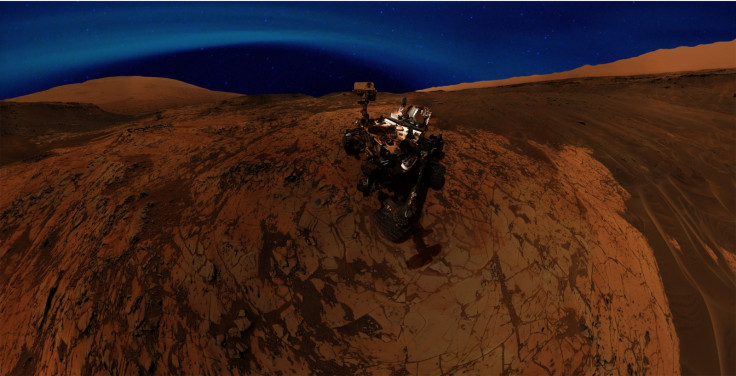Auroras on Mars: Humans on Red Planet would see beautiful deep blue glow from planet surface
Auroras visible to the naked eye have been predicted on Mars for the first time – suggesting that the Red Planet's upper atmosphere is closer to that of Earth's than previously thought.
Scientists from the Aalto University in Finland showed how Mars' upper atmosphere glows blue depending on the activity of the Sun.
Should a manned mission to Mars go ahead in the coming decades, astronauts there would be able to see the event, study author Cyril Simon Wedlund said.
"The study indicates that the strongest colour in the Martian aurorae is deep blue. Green and red also occur, just like on Earth. An astronaut looking up while walking on the red Martian soil would be able, after intense solar eruptions, to see the phenomena with the naked eye," he said.

Aurorae occur when electrically charged particles (mainly electrons and protons) enter the atmosphere and excite the atoms and molecules. Aurorae on Mars were first observed in 2005 through the ESA's Mars Express satellite.
Publishing their findings in the journal Planetary and Space Science, the researchers used a numerical simulation and a laboratory experiment to simulate the aurora.
The experiment was called Planeterrella and was developed by the Grenoble Institute of Planetology and Astrophysics and NASA.
Wedlund said: "The Planeterrella experiment was conducted in France. We replicated the gas of the atmosphere with the most common component on Mars, which is carbon dioxide, after which an electrical discharge was created in a vacuum reminiscent of the Martian upper atmosphere, which led to the formation of a blue glow following the magnetic field structure."
© Copyright IBTimes 2025. All rights reserved.






















